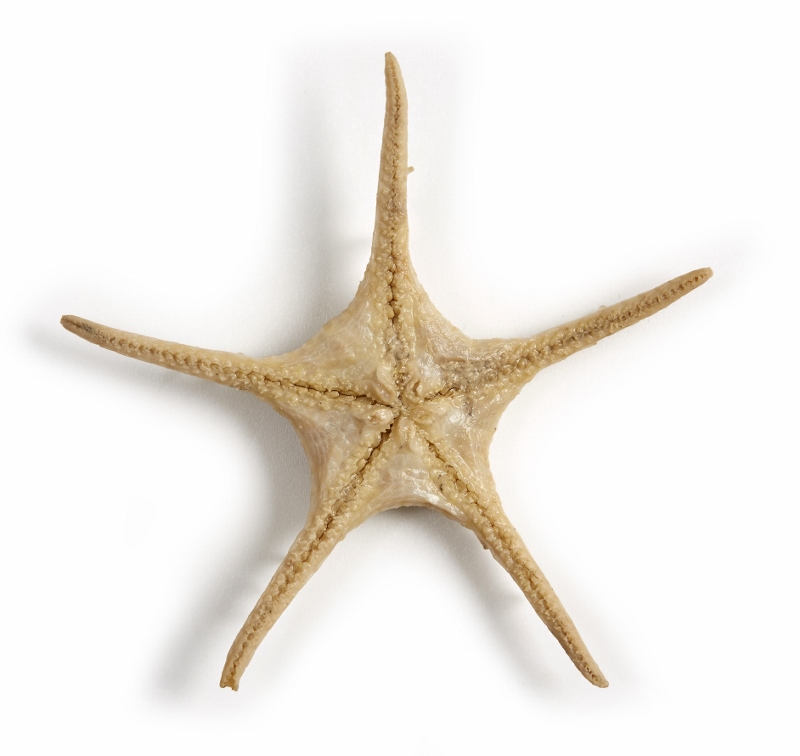
The ‘stars’ of this year’s Christmas card are all part of The Discovery Collections.
The collections comprise benthic and pelagic samples from many areas of the world’s oceans. It is the only collection consisting solely of deep-sea and open-ocean invertebrates in the UK and provides vital insight into the species that live at extreme ocean depths.
The Discovery Collections facility, at NOC in Southampton, maintains a key time-series of deep-sea organisms dating back to 1925 when the RRS Discovery collected the first samples in the Southern Ocean. The collection provides great insight and understanding of deep-sea and open ocean fauna and is continually expanding as research cruises explore more of the deep oceans, gathering new data and samples.
Research on specimens within the Discovery Collections is undertaken to determine whether organisms found are new to science. Scientists can visit the NOC to carry out research on the collections and help to catalogue the species that have been found.
Hyphalaster inermis

This seastar is a specimen of Hyphalaster inermis Sladen, 1883 and was collected in 1991 in a trawl at the Porcupine Abyssal Plain (PAP) at 4850m. The deep-sea animals at this site have been studied to assess long-term changes in the ecosystem, since 1989.
Hyphalaster seastars are relatively common deep-seastars, and this particular species has been found distributed from 3749m to 4880m depth. These types of seastar are also known as mud-stars as they live partially in the muddy sediments on which they also feed. The reproductive biology of this species was studied by a former PhD student, Eva Ramirez, and their depth distributions by another former PhD student, Kerry Howell.
Psilaster andromeda

This seastar is a carnivorous species called Psilaster andromeda (Müller & Troschel, 1842). This specimen was collected using a trawl at about 1000m depth on the Porcupine Seabight, which took place way back in 1979! The species is native to the north eastern Atlantic Ocean where it occurs at depths between 500–1260m. It is a common inhabitant of the Porcupine Seabight, a site which was studied intensively by NOC scientists between 1977 and 1986.
Styracaster

This seastar is a specimen from the genus Styracaster Sladen, 1883 and was collected in 2005 by trawling at the Porcupine Abyssal Plain (PAP) at a depth of 4850 m. The deep-sea animals at this site have been studied to assess long-term changes in the ecosystem, since 1989.
Styracaster seastars are relatively common deep-seastars found at abyssal depths. These types of seastar are also known as mud-stars as they live partially in the muddy sediments on which they also feed. The reproductive biology of this species was studied by a former PhD student Eva Ramirez, and depth distributions by another former PhD student Kerry Howell.
Bamboo coral, Lepidisis

This ‘tinsel’ is a specimen of bamboo coral from the genus Lepidisis. Bamboo corals are deep-water octocorals, so-named for the resemblance of their skeletons to terrestrial bamboo. This specimen was collected during a series of cruises to the Mid-Atlantic Ridge during the NERC-funded ECOMAR program. The specimen was collected in 2010 by the ROV Isis at a depth of 2500m.
Further reading
Howell, Kerry L.; Billett, David S. M.; Tyler, Paul A. (2002). "Depth-related distribution and abundance of seastars (Echinodermata: Asteroidea) in the Porcupine Seabight and Porcupine Abyssal Plain, N.E. Atlantic". Deep-Sea Research Part I: Oceanographic Research Papers. 49 (10): 1901–1920. doi:10.1016/S0967-0637(02)00090-0.
Tyler, P. A.; Pain, S. L. (1982). "The reproductive biology of Plutonaster bifrons, Dytaster insigns and Psilaster andromeda (Asteroidea: Astropectinidae) from the Rockall Trough". Journal of the Marine Biological Association of the United Kingdom. 62 (4): 869–887. doi:10.1017/S0025315400070405.
Ramirez-Llodra, E., Tyler, P.A., Billet, D.S.M., 2002. Reproductive biology of porcellanasterid asteroids from three abyssal sites in the North- East Atlantic with contrasting food input. Mar. Biol. 140, 773–788.